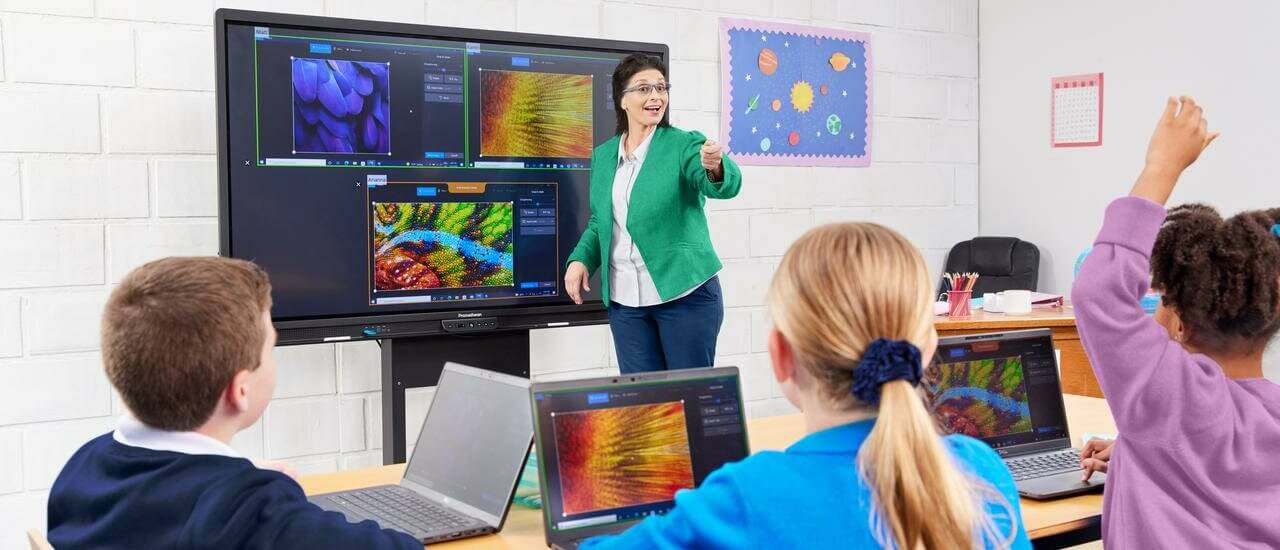Despite the obvious benefits of greater collaboration, engagement, and creativity, there are challenges when it comes to implementing edtech successfully. This is particularly true for multi-academy trust (MAT) schools, where standardisation and collaboration are crucial to success.
So, what are the top challenges faced by MAT ICT departments?
1. Inconsistencies in technology usage
Under the MAT format, different schools may have come together for a variety of reasons, and it’s unlikely that they are all at the same level when it comes to using technology. Some schools might have adopted the digital classroom and invested heavily in BYOD initiatives, while others could be struggling with unreliable broadband. Where discrepancies exist, creating a single, joined-up approach is always going to be a struggle. But, to deliver the high educational standards expected of a MAT, establishing a unified technological ethos is a must.
The good news is that there are ways to accomplish this. For example, by moving to a cloud-based model, MAT ICT departments can leverage collaboration and productivity tools that create greater consistency across schools.
2. Infrastructure investment
The number of schools that believe they are well-equipped with ICT infrastructure has dropped to its lowest point in years. What’s more, just under half of educators believe that schools are either not allocating enough budget to technology, or are investing in the wrong things.
Of course, budgetary pressures are presenting a significant problem across the sector, but for MATs there is the additional challenge of ensuring that ALL their schools receive the necessary level of investment to succeed. As such, significant one-off investments are not feasible for most MAT ICT departments.
However, MATs do have the power to leverage their scale to save costs and achieve greater value for money. One way to accomplish this is to consider total cost of ownership and invest in appropriate, upgradable and long-lasting technologies. For example, with an interactive display like ActivPanel, schools can benefit from the world’s first upgradeable Android-based interactive display.
3. Sharing ICT staff
MATs often need to share resources. For example, technical staff employed by secondary schools may have to help primaries who were previously supported by local authorities. While this can help to keep costs down, if not carefully monitored, resources can be stretched to breaking point and create resentment from ICT teams who are forced to adapt to new roles and new responsibilities.
However, there are some things that can be done to reduce the burden on IT staff:
- Transition all schools to the same collaborative productivity software
- Organise remote access for ICT systems
- Develop a comprehensive IT strategy to support future growth
- Enforce due diligence ICT audits for any joining school
- Consolidate ICT suppliers
- Invest in training to ensure that support across the trust is consistent
By ensuring that IT teams are supported, MATs can develop more sustainable models that deliver long-term savings while moving forward with the strategic adoption of edtech.
4. Geography
As MATs expand and grow across a larger geographical area, this can bring further challenges for ICT teams.
Broadband speed is an obvious example, with MAT network managers all too familiar with the logistical challenges of managing multiple sites. One solution to this problem is Managed Wide Area Networks (WANs), whereby schools privately connect via the same high-speed, high-capacity, private network. MATs are also turning to the cloud as an easy and cost-effective way to join up systems.
When it comes to schools across catchment areas, different demographics can also cause problems, with parents in one area often able to provide better IT access at home than in another. While technology can level the playing field for students across the socioeconomic spectrum, the key to using it to reduce the attainment gap is doing so correctly. Giving all pupils the same level of access and ensuring ongoing in-class support is essential. Otherwise, advantaged pupils having greater access to digital tools at home only compounds the disparities in achievement.
5. Online security
Keeping students safe is a key challenge for all schools, regardless of the educational model. Issues such as cyber-bullying, grooming, data protection, and digital literacy are sure to be part of any ICT team’s priority list.
Ultimately, while ICT departments in MATs have a number of challenges to overcome, by formulating a robust ICT strategy, they can ensure that any educational technology they have invested in is delivering as it should; and benefiting the trust as a whole.




